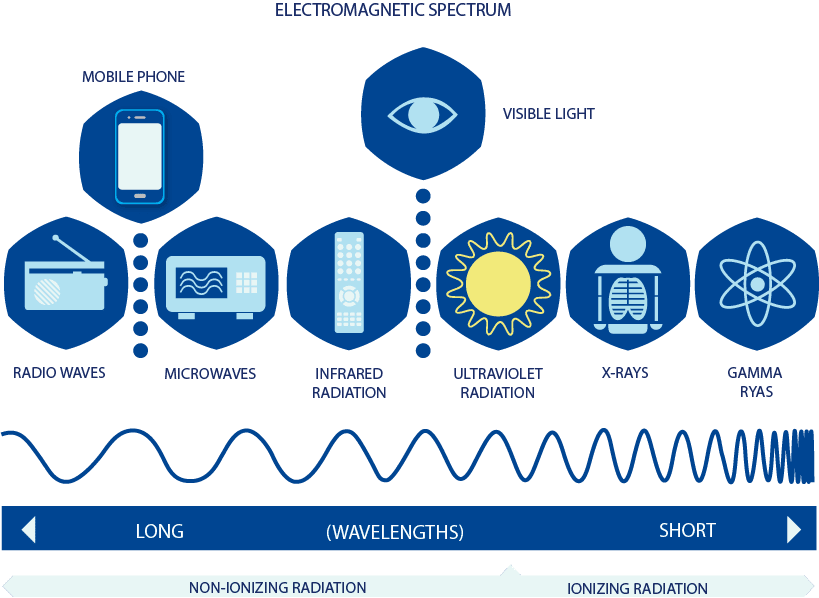RF-EMF radiation can cause DNA damage, tissue heating, and can disrupt the blood-brain-barrier. These effects are real, and ARPANSA is actively involved in discussions with EHS group, the medical experts, and researchers. The agency will continue to study research related to the health effects caused by EMF radiation.

RF-EMF damages DNA
exposed to electromagnetic fields that are created by man (EMFs) is associated with DNA damage, as well as other adverse health consequences. EMFs can disrupt the intracellular ionic levels, which are vital to maintain a cell's electrochemical balance. It can also cause disruption to cell homeostasis and result in DNA damage. Moreover, exposure to EMFs is also associated with an overproduction of free radicals as well as reactive oxygen species (ROS).
Exposure to RF-EMF radiation has been associated with changes in the male germ cell's development. This involves the differentiation of the germ cell into spermatozoa, as well functioning maturation when the spermatozoa move throughout the epididymis. To determine the sensitivity of RF-EMF exposure to the development of male germ cells A specially designed waveguide machine was designed for the exposure of unrestrained mice to RF EME at 2.2 W/kg.
In a recent study researchers have discovered that exposure to RF-EME caused the oxidation of DNA in spermatozoa. Sperm DNA fragmentation increased by 18% after a week of treatment, and by 23 percent after 5 weeks. Furthermore, DNA damage in mitochondria was observed by measuring the level of a biomarker, 8-hydroxy-2-deoxyguanosine (8-OH-dG).
However the fact that RF-EMF radiation isn't yet considered a carcinogen. But, numerous studies have shown that RF-EMF exposure can impair DNA health in variety of cell varieties. In one study researchers were exposed Vero cell lines to EMF of 100 Hz for about 45 minutes. They measured DNA damage within 48 hours of exposure to determine whether the exposure affected the integrity of DNA.
RF-EMF causes tissue heating
Although the effects of RF-EMF are usually thought as thermal in nature, some studies have demonstrated that non-thermal effects are also evident. These may be the reason for certain of the unsolved findings in epidemiological studies on EMF hypersensitivity. Therefore, it is important to look at the non-thermal aspects when conducting systematic reviews.
The non-thermal effects of the RF-EMF can occur at the cell membrane. This is an area which has already been extensively studied. In particular the electrochemical properties of cell membranes is being studied. It is believed that RF-EMF energy higher than 1 MHz gets transferred into the tissues through dielectric and ionic dissipation. The theoretical studies have indicated that the energy transfer to tissues could be as high as 200 kV/m.
The electric properties of tissues are regulated through the distribution and composition of water molecules and other molecules inside the body. This determines how well absorbed EMR from RF is absorbed by different tissues. Tissues with higher conductivity tend to absorb more field and cause more of an effect. This is the reason why the amount of tissue heating does not increase steadily between the outside and inside the body however, it is more prevalent in hot spots. Bone and fatty tissue are less susceptible to RF heating than other tissues, because they have a low water content.
The intensity of the field's electromagnetic energy is determined by the strength and frequency that the electromagnetic field has. Muscle tissue is more able to absorb field energies than the other tissue, and converts it to heat more effectively. Typically, the depth of penetration of RF-EMF is measured in millimeters (mm). But, the higher the frequency, more shallow the penetration.
RF-EMF causes blood-brain barrier disruption
Researchers have discovered that RF-EMF can disrupt the blood-brain barrier, altering sleep patterns and neurotransmitter levels. Additionally to this, the effects on the effects of EMF affect brain function are linked to neurodegenerative disorders. For is emf radiation harmful , EMF from mobile phones can affect electroencephalogram activity and sleep patterns, as well as the activity of nitric oxide and xanthin oxidase.
Researchers at the Vienna University have studied the effects of exposure to RF EMF on brain cells. They also examined what effects ELF EMF on the brain system. While the mechanisms of the cell involved are not completely comprehended but there is a clear association between ELF-EMF exposure and depletion of myelin. This relationship might account for the electro-hypersensitivity symptoms of electro-hypersensitivity. There are, however, known methods to regenerate myelin in the brain.
Researchers have observed that exposure to frequencies of 900 Mhz EMF increased the permeability of BBB and caused an increase in signs of neuronal damage in rats. They also observed an increase in the release of albumin into neurons. Additionally, https://etextpad.com/ observed that after 30 minutes of exposure at 900 MHz 99mTc-MIBI accelerated its penetration in the cortex. However, what is emf radiation did not occur when using Evans blue injections.
Despite these findings, RF-EMF is not able to provide a definitive mechanism for disrupting the BBB. Evidence suggests that non-thermal EMF exposure can increase erythrocyte membrane permeability. This could influence the BBB and enhance the efflux of calcium ions. Moreover, the presence of a 99mTc-MIBI radiotracer within the brain is also connected to an increase in the permeability of BBB.
